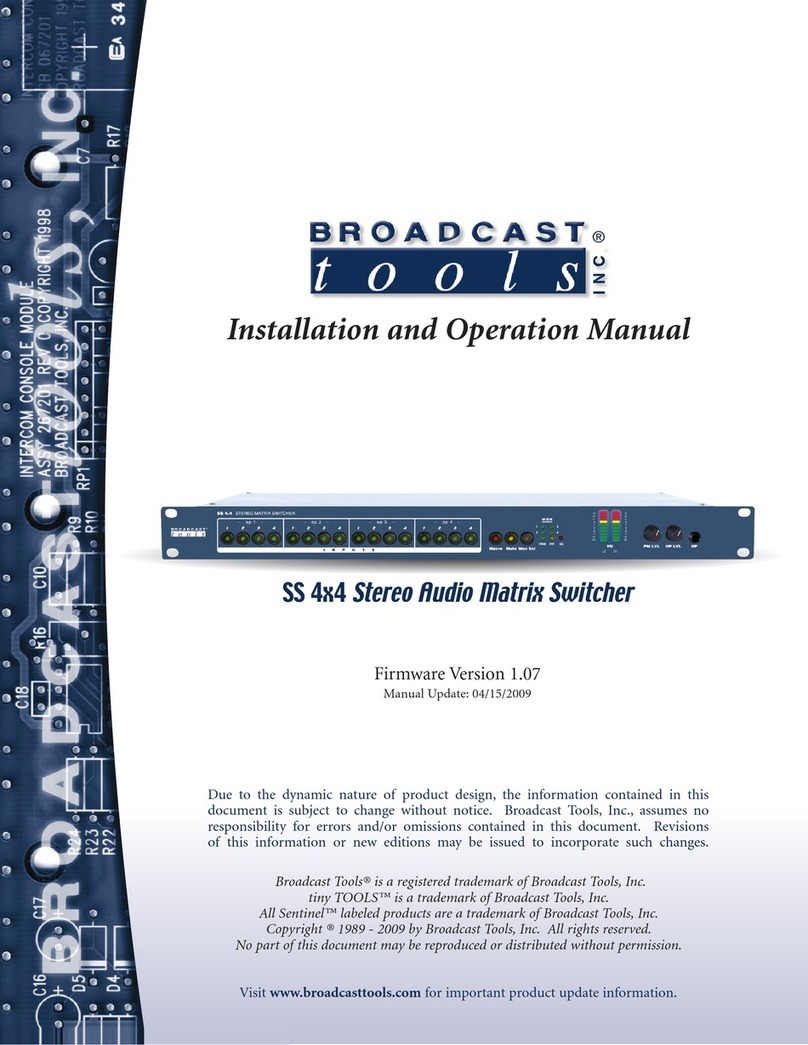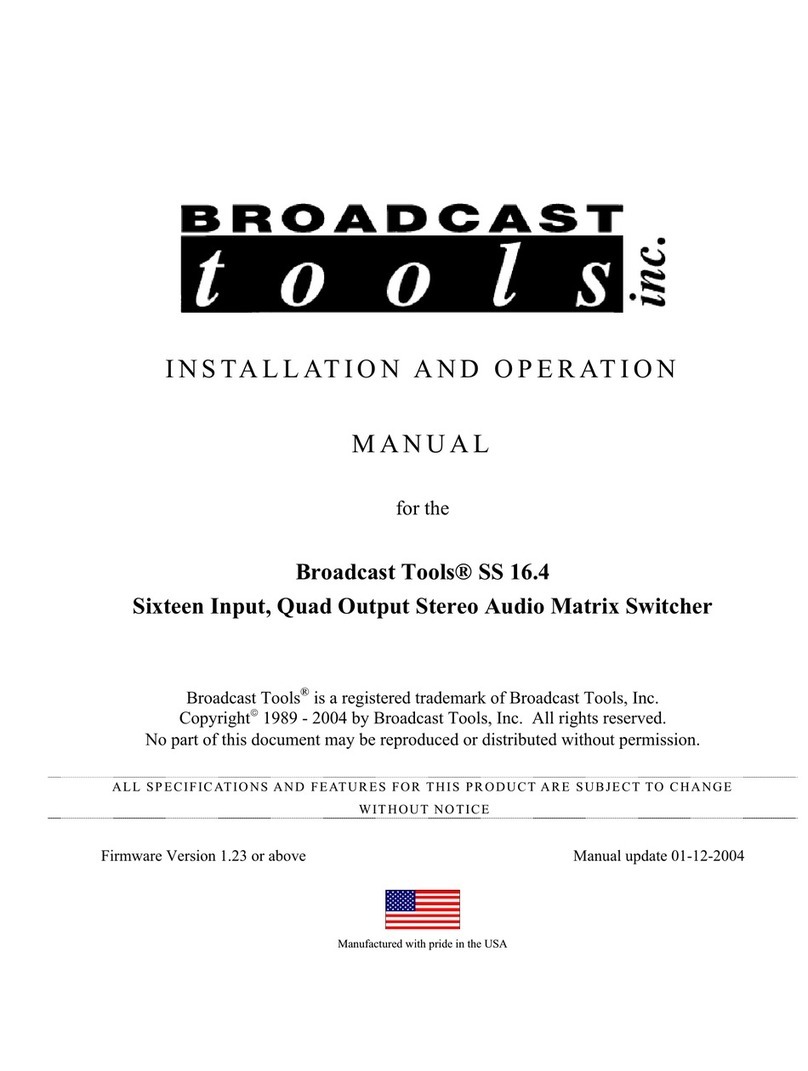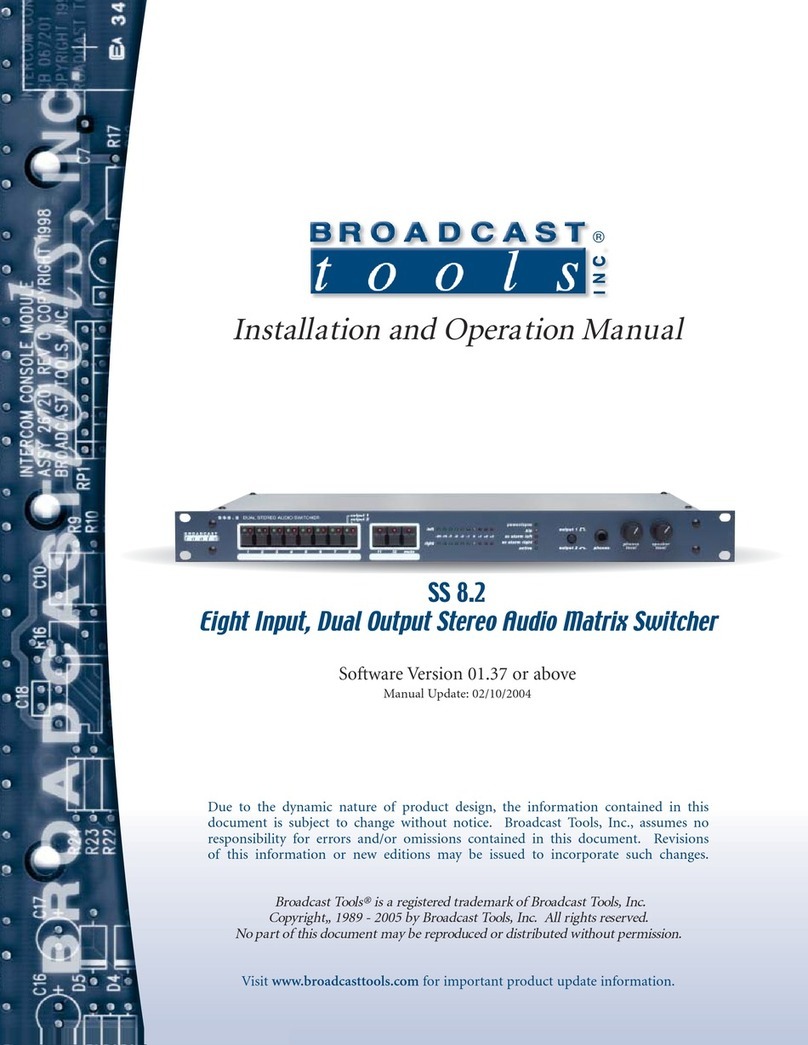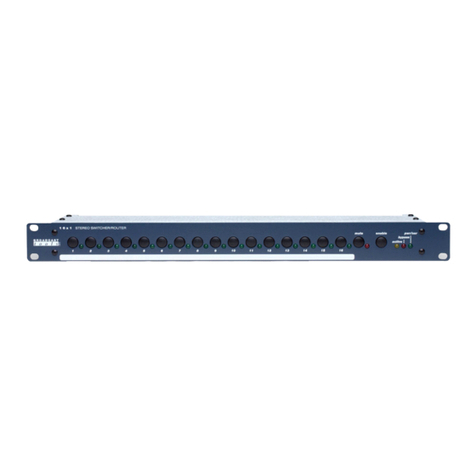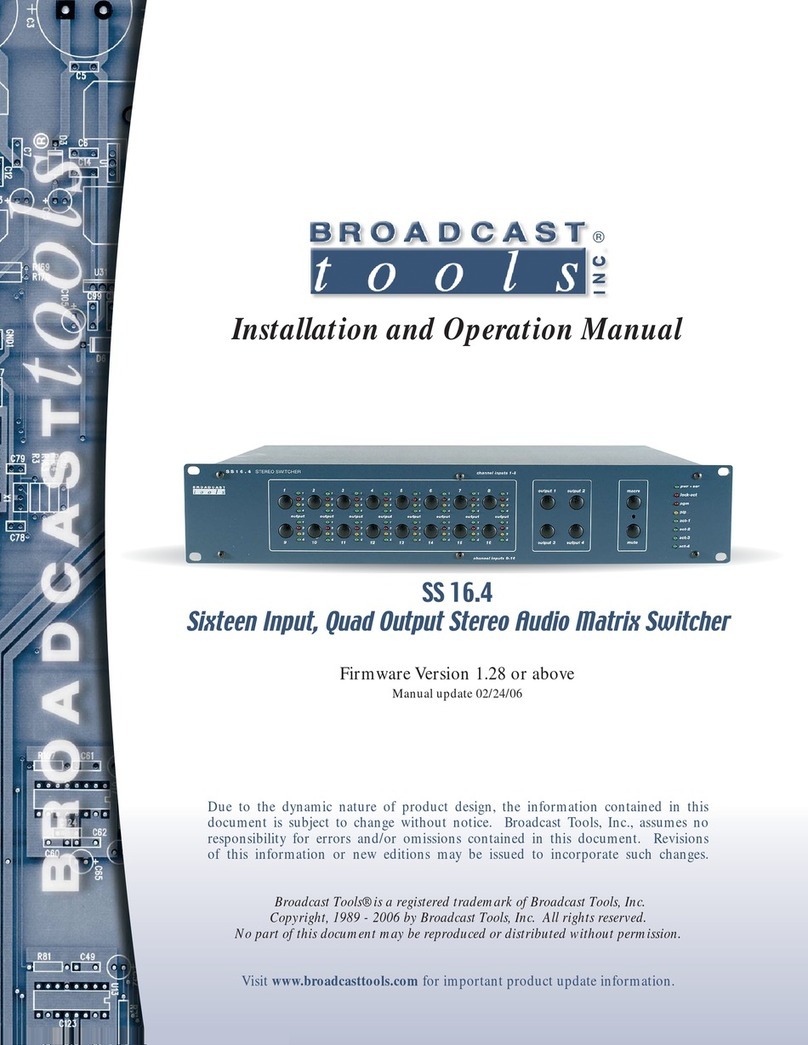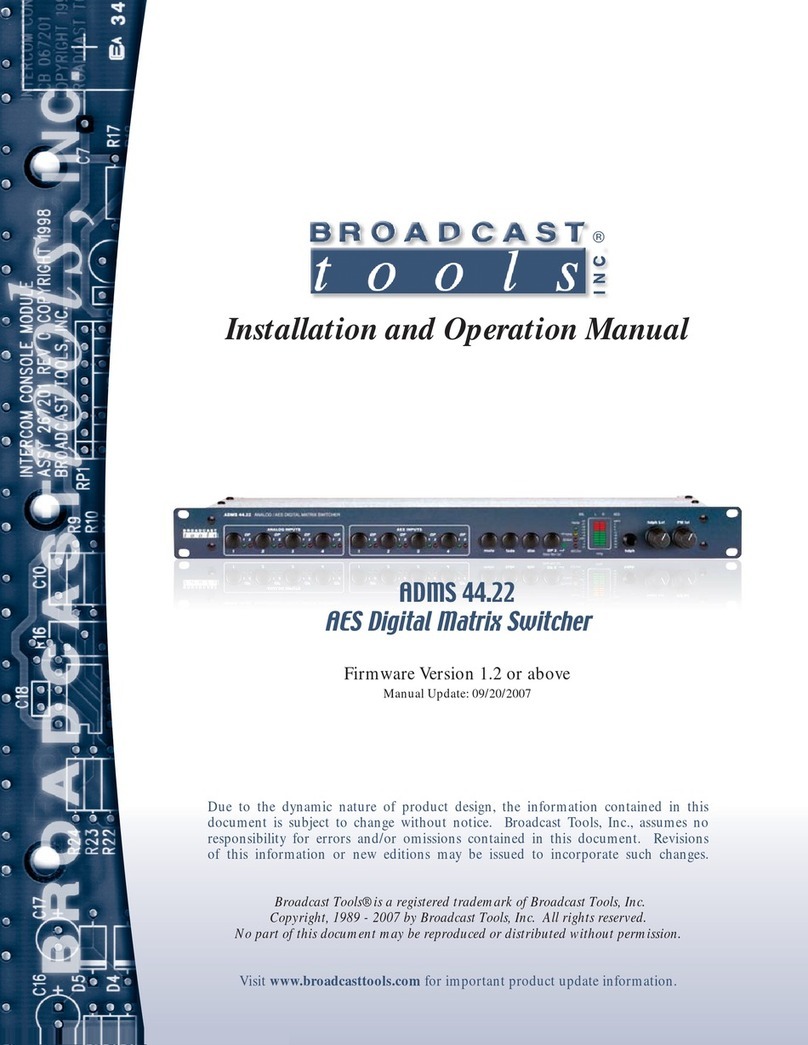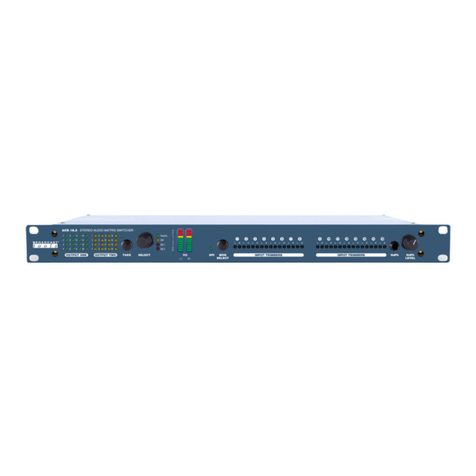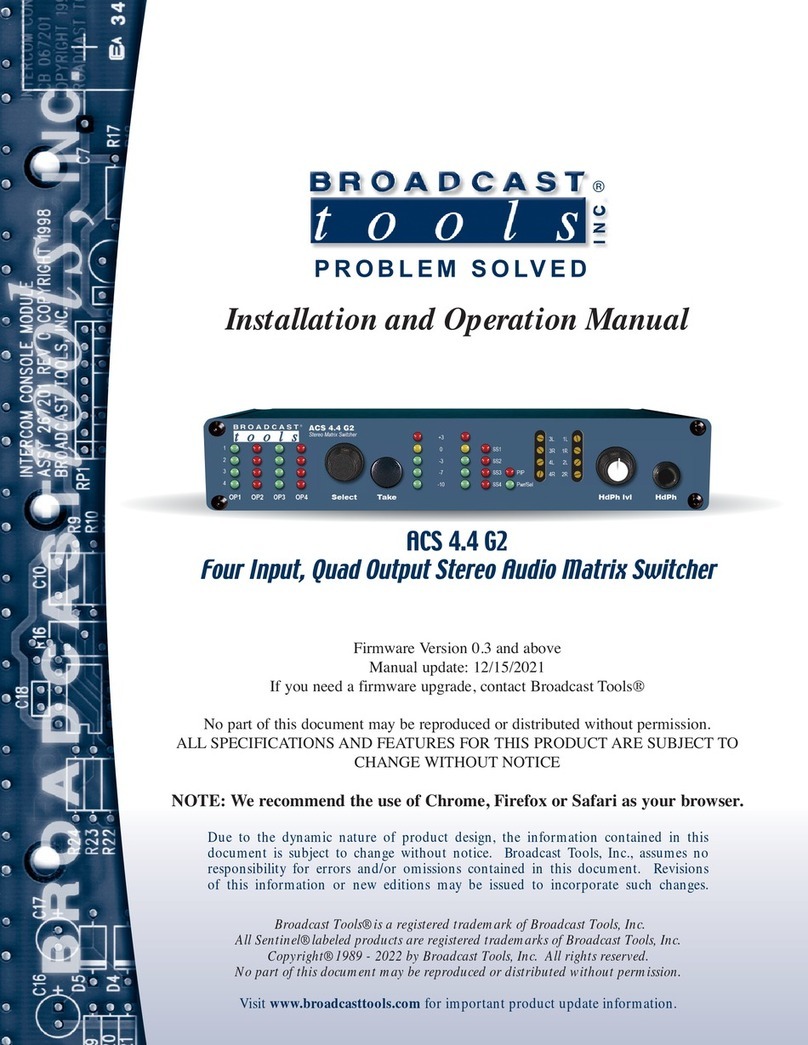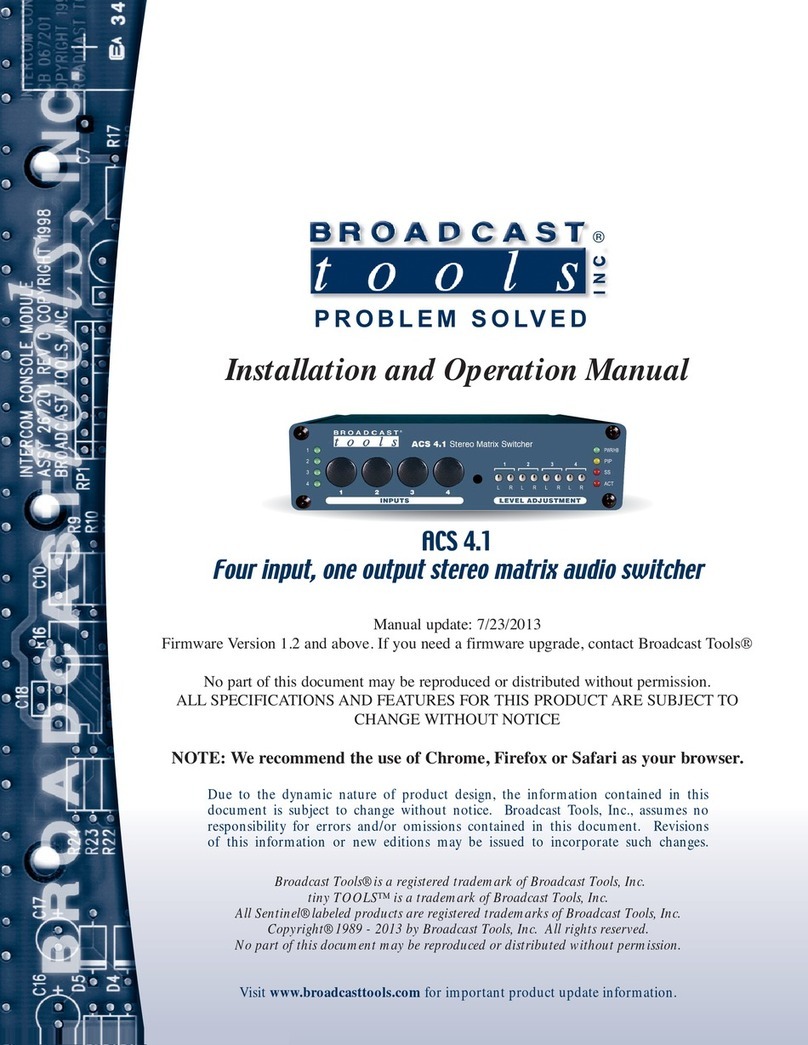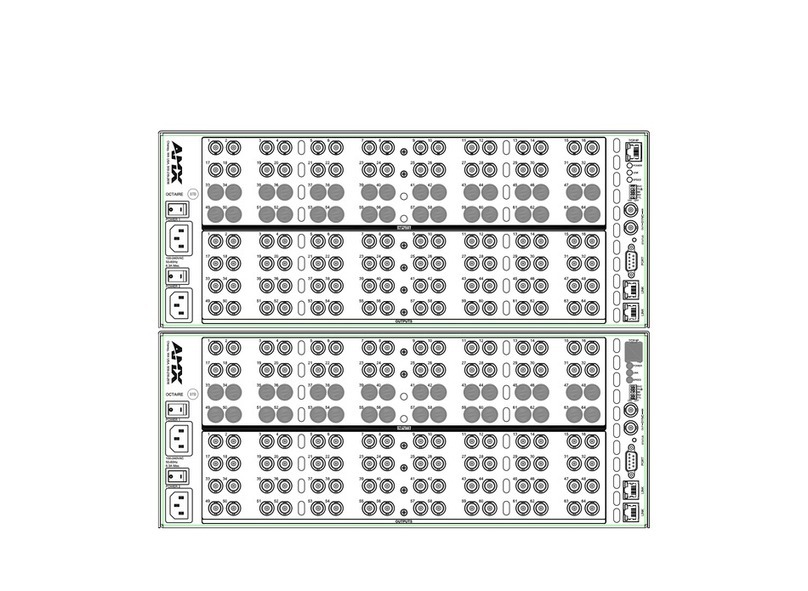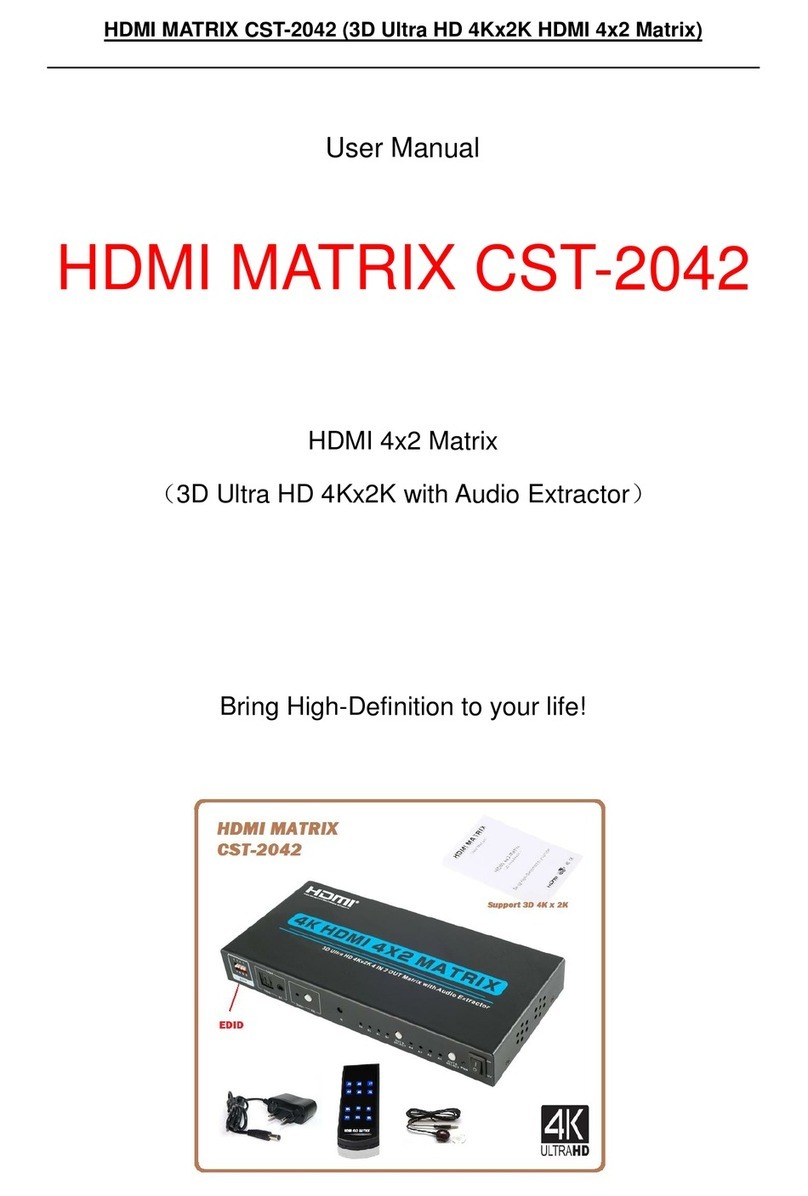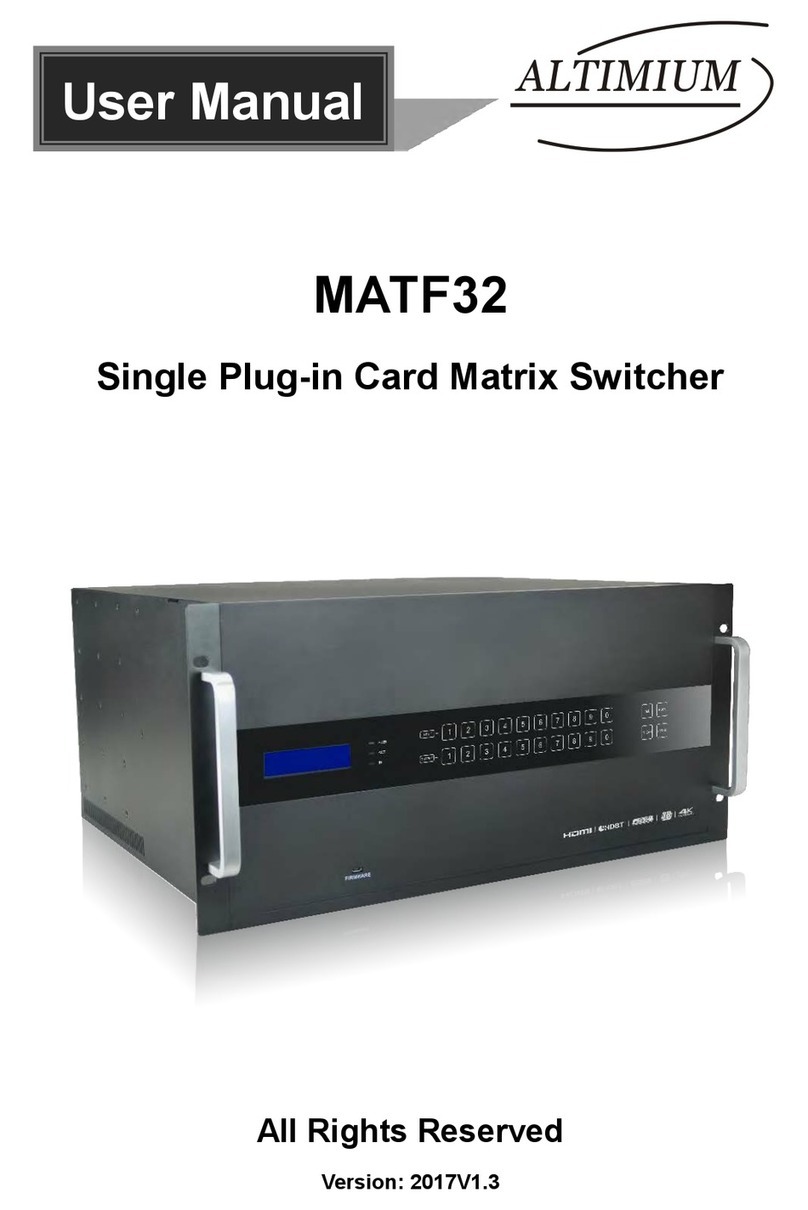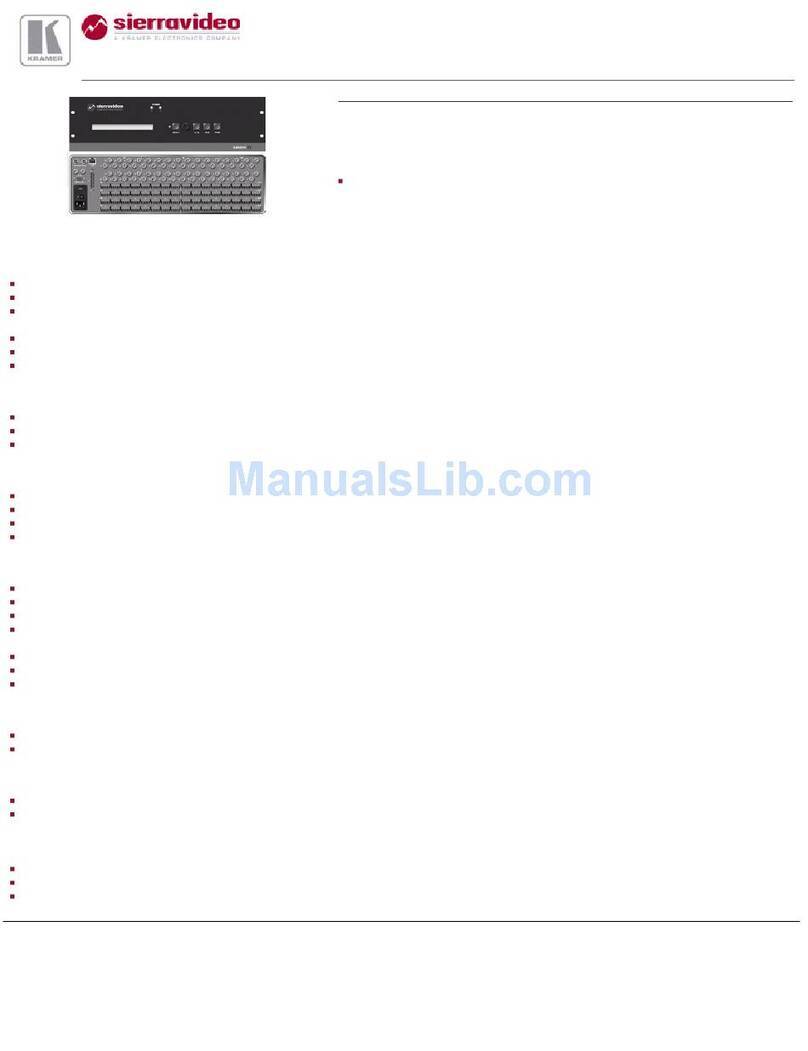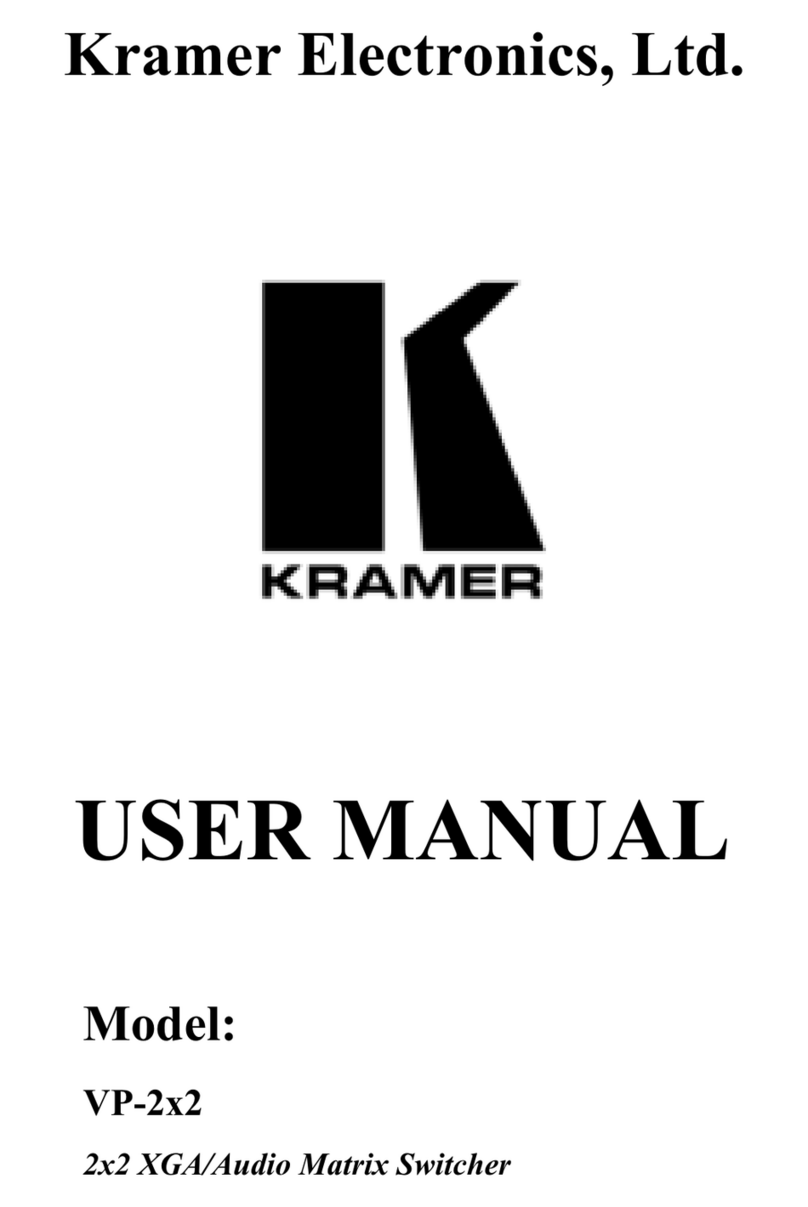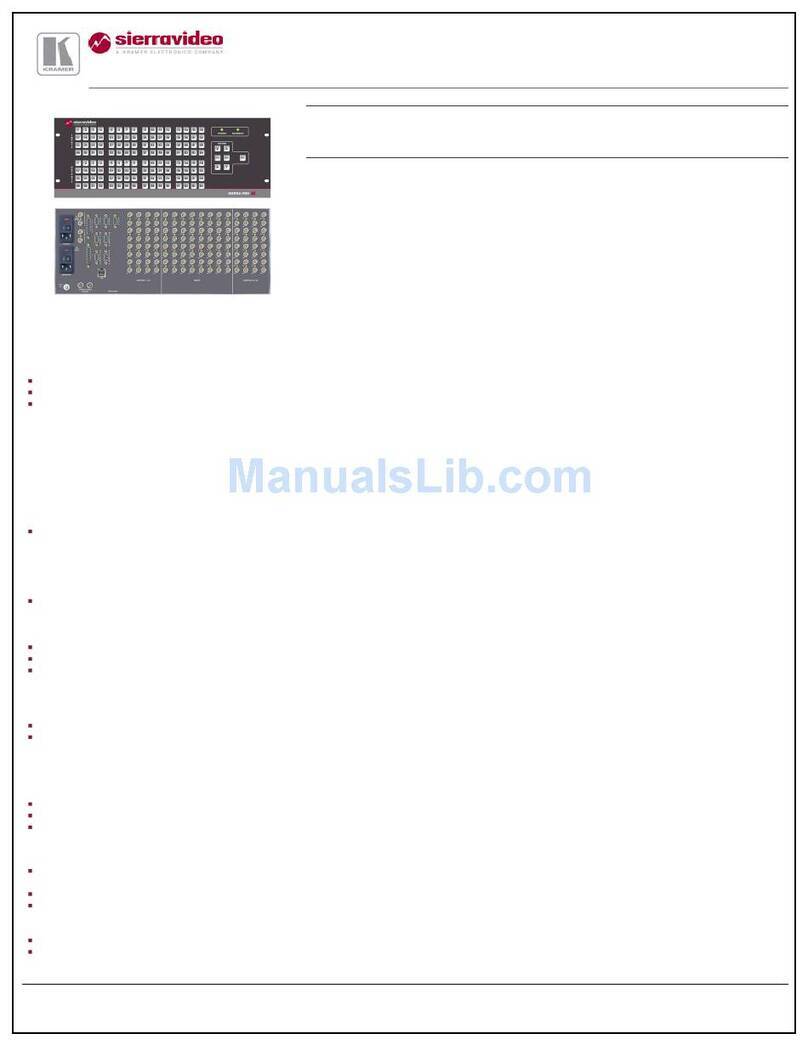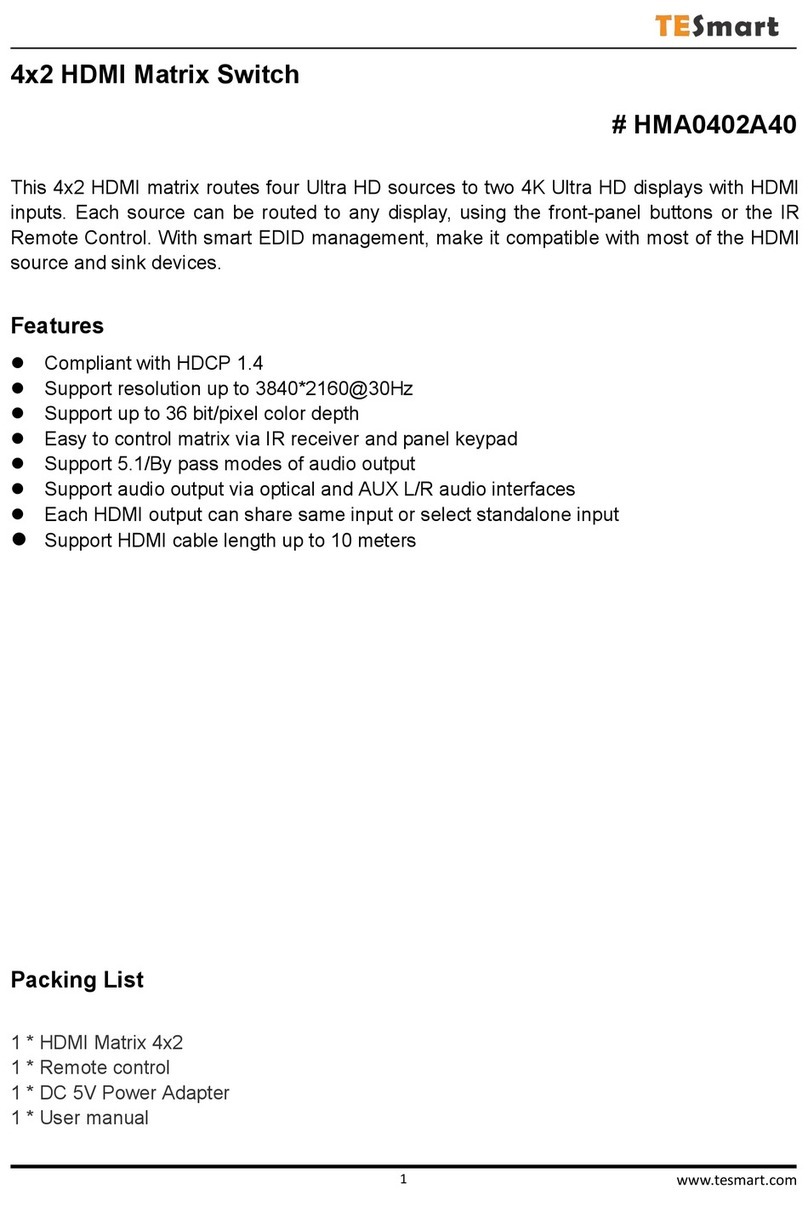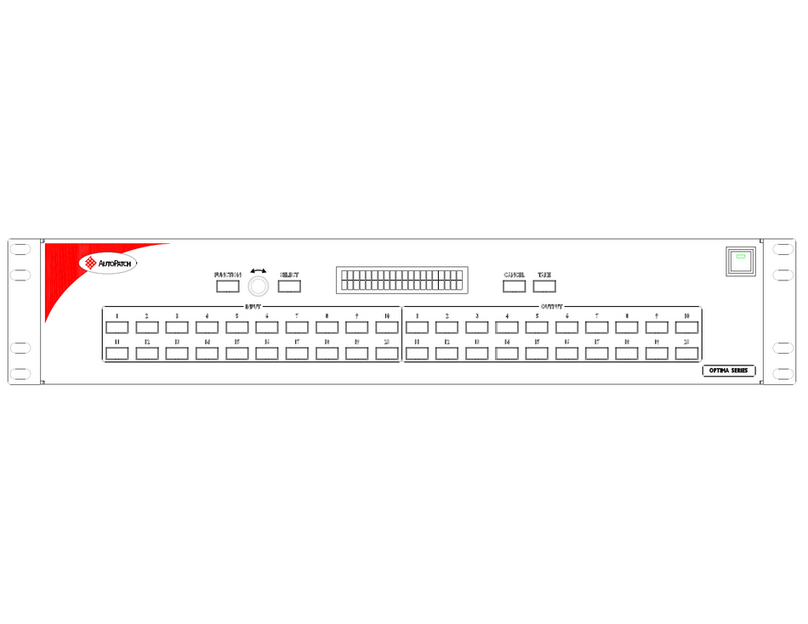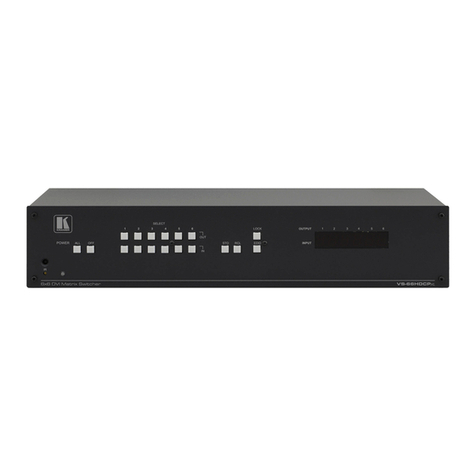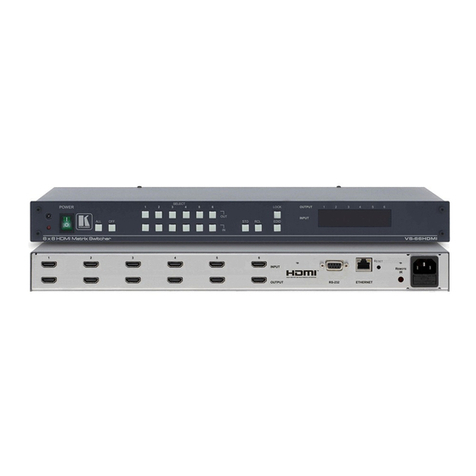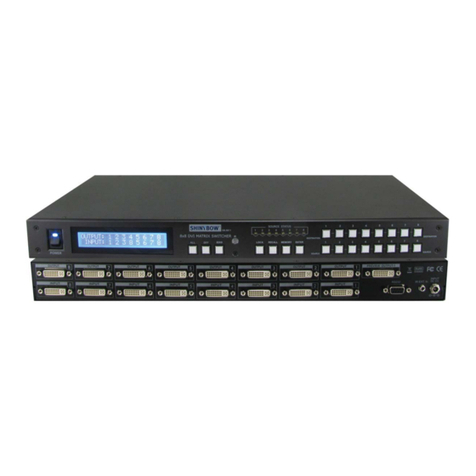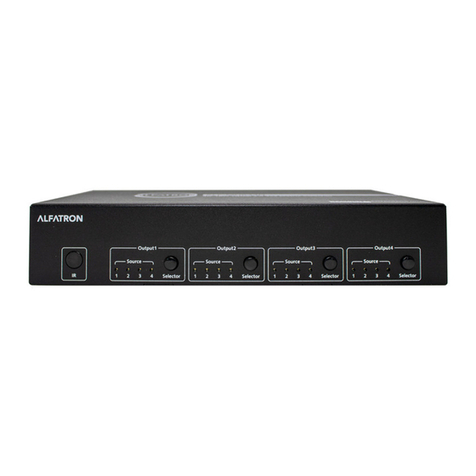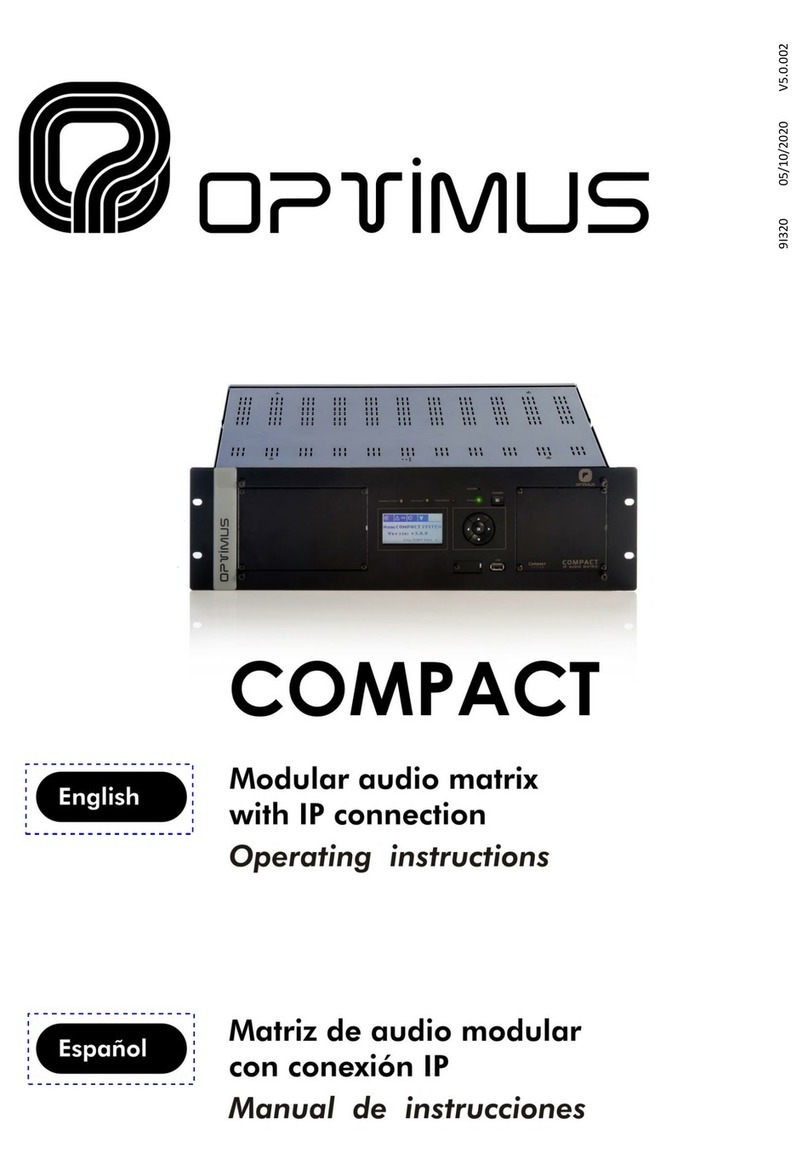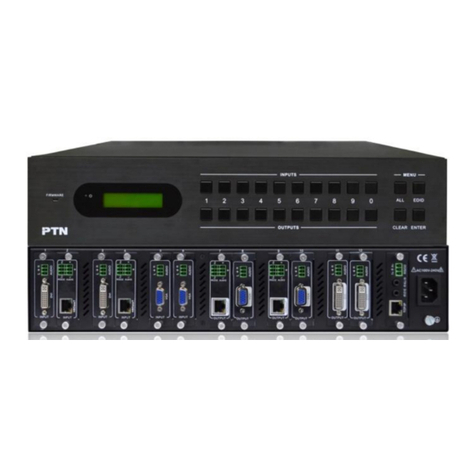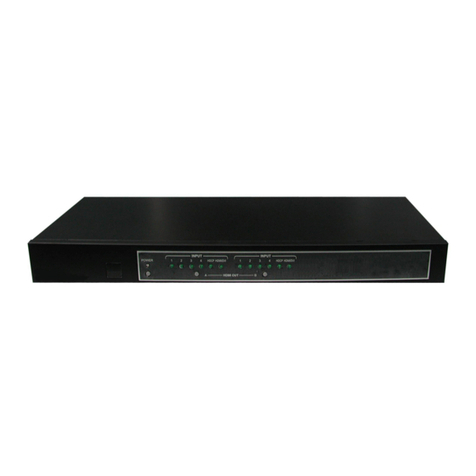6
Broadcast Tools®ACS 8.2 Eight Input, Dual Output StereoMatrix Audio Control Switcher
DESCRIPTION
Controls:
• Headphone monitor switch to select which output channel is monitored.
• Headphone jack
• Headphone level control
Audio Inputs:
Each of the 8 stereo inputs are balanced bridging (20KΩ) at a nominal line level of
+4dBu. Sufficient gain is provided for unbalanced consumer level products. Multi-
turn level controls are provided for each channel.
Audio Outputs:
The ACS 8.2 provides two selectable balanced stereo outputs. Two balanced mon-
aural outputs are also provided which follow their respective stereo outputs. The
stereo outputs are adjustable.
“ACT” Audio Activity Sensors:
The ACS 8.2 contains individual audio activity sensors for each of stereo output
channels. For each channel, a detector monitors the sum of each stereo channel.
The factory default delay is set at 10 seconds, with a threshold of -37 dB, while the
restore time is set at 10 seconds. Upon silence delay detection, the “SS-1 or SS-2”
spdt relay is closed for the duration of the silence and the corresponding (SS-1 or
SS-2) LED is lit for duration of silence. Serial data is sent on either the loss or
restoration of audio. The sensor may be programmed for:
• Number of seconds of silence that must be present before an alarm state is
reached.
• Number of seconds that valid audio must be present before an alarm state is
cleared (Restore).
PIP (GPI) Input:
The Parallel Input Port with the Programmable Pulse Stretcher provides 16 pulse-
stretched parallel 5 volt TTL/CMOS logic compatible GPI inputs. The inputs are
pulled high to 5 volts through a 20KΩresistor and are activated by pulling the input
to ground. These inputs supply status to any serial polling device (when the unit
ID is set to 0, no polling of inputs is required). For each channel, a pulse of spec-
ified minimum input duration (000 to 2.55 Seconds) causes the status to go true or
the end of the input pulse.
“Open Collector” Status Outputs, 8 Port Output Control
The ACS 8.2 provides eight open collector status outputs. The status outputs may
be configured to operate in one of three modes:
• The status output follows the associated channel (multiplex applications).
• The status outputs a one-second pulse when the associated channel is selected.
• Software control
